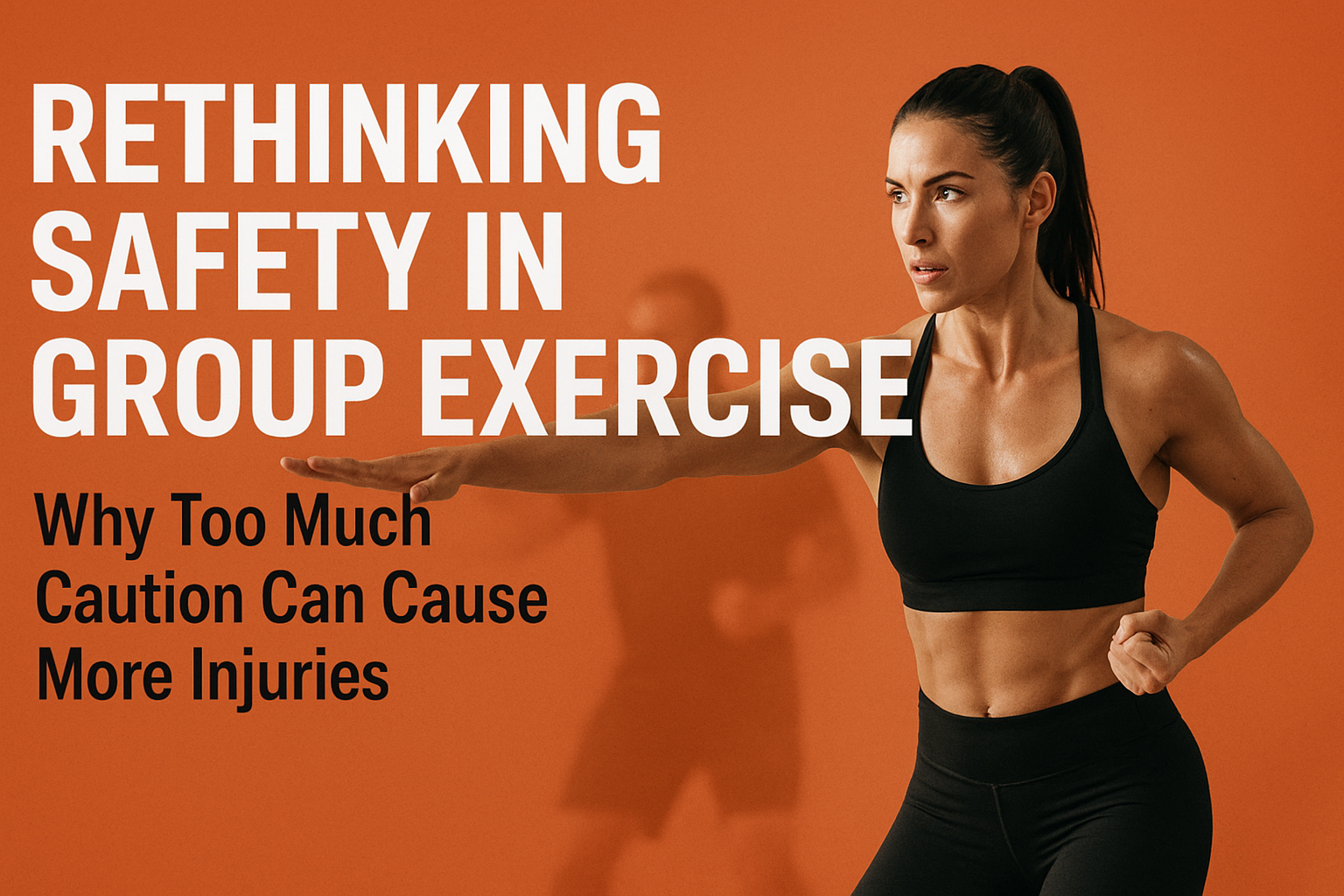In today’s fast-paced world, managing mental health can often feel like an uphill battle. The good news is that incorporating cardiovascular exercise into your routine can significantly boost your mental well-being. When we talk about “how cardio can improve your mental health,” we are discussing a multifaceted approach to mental wellness that not only benefits your body but also your mind. This blog will delve into the profound impact of cardio on mental health, offering strategies to unlock these benefits through simple and effective exercise routines.
The Mental Health Benefits of Cardio
Cardiovascular exercise is not just about getting fit; it’s a crucial component of mental health maintenance. When you engage in cardio activities, your body releases endorphins, nature’s very own mood enhancers. These chemicals create a sensation often described as a “runner’s high,” leading to happiness and contentment. Regular cardio exercises, such as running or swimming, go beyond temporary mood boosts; they address core mental health issues by reducing symptoms of anxiety and depression through a reduction in cortisol, the body’s primary stress hormone.
Beyond mood enhancement, cardio exercises are instrumental in promoting better sleep patterns. Quality sleep is fundamental for maintaining emotional balance and mental clarity. An often-overlooked benefit of cardiovascular exercise is how it boosts brain functionality and memory by increasing both blood flow and oxygen distribution to vital areas of the brain. This cognitive upgrade contributes to a sharper mind and a more resilient mental state. Moreover, the social aspect of group cardio activities fosters connections, offering both emotional support and a sense of community, essential for mental health sustenance.
– Running fosters endorphin release and uplifts the mood.
– Group cycling classes offer social support and a sense of community.
– Regular swimming calms the nervous system by reducing cortisol levels.
– Dance workouts integrate physical activity with emotional expression.
– Zumba combines fitness with fun, enhancing overall well-being.
Through these activities, the mental health benefits of cardio become tangible and attainable, showcasing its vital role in modern wellness routines.
Various Types of Cardio Exercises and their Specific Mental Health Benefits
| Cardio Activity | Primary Mental Health Benefit | Mechanism | Additional Benefits | Recommended Frequency |
|---|---|---|---|---|
| Running | Mood elevation and stress relief | Endorphin release | Boosts energy, improves cardiovascular health | 3-5 times per week for 20-30 minutes |
| Cycling | Anxiety reduction and serotonin boost | Serotonin and dopamine production | Enhances leg strength, promotes joint mobility | 3-5 times per week for 30-45 minutes |
| Swimming | Relaxation and cortisol reduction | Lowering of cortisol levels | Full-body workout, supports lung function | 2-4 times per week for 30 minutes |
| Group Aerobics Classes | Social connection and mood enhancement | Endorphin surge through rhythmic movement | Builds community, enhances coordination | 1-2 times per week for 45-60 minutes |
| Dance Workouts | Emotional release and improved well-being | Rhythmic and expressive movement | Boosts mood, supports balance and flexibility | 2-3 times per week for 30-45 minutes |
| Zumba | Fun-based fitness, reduces depression symptoms | Endorphin release through group dynamics | Enhances social bonds, improves motor skills | 1-2 times per week for 45-60 minutes |
| HIIT | Rapid mood boost and stress reduction | Quick endorphin surge from high-intensity work | Increases metabolic rate, builds endurance | 2-3 times per week for 20-30 minutes |
| Walking in Nature | Anxiety relief and cognitive relaxation | Connection with nature, lowered cortisol | Increases mindfulness, supports immune system health | Daily for 20-30 minutes |
| Cycling Classes | Support in anxiety management and serotonin boost | Social engagement, physical challenge | Increases stamina, strengthens leg muscles | 1-2 times per week for 45-60 minutes |
| Mindful Walking/Jogging | Tranquility and enhanced focus | Slow-paced, steady cardio | Provides time for reflection, improves balance and mobility | 3-5 times per week for 20-30 minutes |
| Team Sports (e.g., Soccer) | Social interaction, improves emotional well-being | Team support, physical engagement | Builds community, promotes accountability | 1-2 times per week for 60-90 minutes |
What are the Mental Health Benefits of Cardio?
Cardio exercises are a treasure trove of mental health benefits, enhancing mood, and easing symptoms of anxiety and depression. By encouraging the release of endorphins and serotonin, cardio elevates your mood, providing a natural antidote to feelings of sadness or unease. Cognitive function also reaps rewards, as exercise improves blood flow to the brain, enhancing memory and concentration. These neurological benefits are further complemented by lower stress levels, as cardio reduces cortisol production, promoting relaxation and emotional equilibrium.
– Running and endorphin release can elevate mood effectively.
– Cycling encourages serotonin production, easing anxiety.
– Swimming aids in cortisol reduction, enhancing relaxation.
– Group aerobics class improves social interactions, boosting mood.
– HIIT sessions can rapidly elevate mood through endorphin surges.
By integrating these exercises into daily life, you can glean lasting impacts, fortifying your mind against daily stressors and enhancing overall mental well-being.
Cardio and Depression
For those battling depression, regular cardio activities serve as a powerful tool for mood stabilization. Cardio boosts the production of endorphins, which are essential mood lifters, breaking the cycle of depressive symptoms. Regularly engaging in such activities can diminish the levels of stress hormones like cortisol, fostering an internal atmosphere of calmness. Adequate sleep, often elusive for those suffering from depression, is an added benefit of consistent cardio, further supporting mental health.
– Consistent running programs increase endorphin levels.
– Cycling regularly lowers cortisol, smoothing emotional landscape.
– Swimming offers relaxation and improves sleep, crucial for emotional health.
– Participation in group sports promotes social interaction, alleviating isolation.
– Dance classes provide emotional release alongside physical exercise.
Cardio’s impact in combating depression is profound, offering not just a temporary respite but a substantial enhancement of one’s mental wellness and quality of life.
Cardio and Anxiety
When it comes to managing anxiety, cardiovascular exercises play a pivotal role. The release of endorphins during cardio stabilizes mood and mitigates anxiety symptoms. Training regimes such as running or cycling cultivate a sense of inner tranquility and naturally decrease stress levels. Cardiovascular workouts also considerably enhance sleep quality, a vital aspect of anxiety management, leading to better mental clarity and emotional resilience.
– Running reduces stress and alleviates anxiety symptoms.
– Consistent cycling routines promote calmer mindsets.
– Swimming enhances relaxation, improving anxiety management.
– Group cardio exercises bolster social connections, reducing anxiety.
– HIIT workouts quickly elevate mood and reduce stress levels.
Incorporating these exercises into daily routines provides a pathway to effectively manage anxiety, fostering long-term serenity and psychological fortitude.
Cardio and Stress
The relationship between cardio and stress management is profound and transformational. By engaging in regular cardiovascular exercises, stress levels can be significantly reduced through the steady release of endorphins, which naturally elevate mood. Activities like running, cycling, and swimming lower the production of adrenaline and cortisol, making relaxation more attainable. Improved sleep quality, courtesy of consistent cardio, is crucial for managing stress and maintaining overall mental wellness.
– Running helps diminish cortisol, enhancing relaxation.
– Cycling decreases adrenaline levels, promoting calm.
– Swimming improves sleep, reducing stress over time.
– Aerobic classes offer routine and community, relieving stress.
– Mindful walking or jogging in nature also rejuvenates and calms mind.
Cardio activities organically create a structure for stress management, boosting emotional resilience and mental clarity.
Cardio and ADHD
Cardiovascular exercise is a beneficial strategy for individuals with ADHD, helping improve their focus and reduce hyperactivity. Regular cardio sessions facilitate better executive function, aiding in decision-making and problem-solving. Exercise increases the release of neurotransmitters like dopamine and norepinephrine, often imbalanced in ADHD, thereby improving attention and cognitive function. Furthermore, cardio exercises help mitigate anxiety and stress, common co-occurring conditions with ADHD.
– Running improves attention span and reduces impulsiveness.
– Cycling fosters better focus through dopamine release.
– Aerobic workouts support executive functioning improvement.
– Engaging in team sports enhances social skills and reduces hyperactivity.
– HIIT sessions improve both mental clarity and behavioral regulation.
Integrating cardio in daily activities can significantly alleviate ADHD symptoms, ensuring a balanced approach to mental health management.
Cardio and PTSD and Trauma
Regular cardiovascular exercise can markedly alleviate the symptoms of PTSD and trauma by lowering anxiety and depression. Activities such as running, cycling, and swimming increase endorphin and serotonin production, which elevate mood and provide a sense of calm. Furthermore, consistent cardio routines help regulate the stress-response system, making trauma-related trigger management easier. Cardiovascular exercises also provide a meditative dimension, promoting mindfulness and offering a sense of control over mental health.
– Running enhances serotonin levels, calming anxiety related to PTSD.
– Swimming reduces tension, facilitating emotional management.
– Group activities provide community support, easing isolation.
– Dance offers expressive movement, aiding trauma processing.
– Mindful walking nurtures serenity and balances mental health.
Cardio’s multifaceted benefits serve as a lifeline for those grappling with PTSD and trauma, offering both physical and emotional recuperation pathways.
How Does Regular Cardio Exercise Benefit Mental Health?
Regular cardio exercise is a cornerstone of mental health enhancement, offering a multitude of benefits. By releasing endorphins, cardio naturally lifts mood and reduces stress, acting as a sustained mental health boost. These exercises also facilitate a decrease in anxiety and depression symptoms by promoting neurotransmitter release. Cardiovascular activity improves sleep quality, leading to better mental clarity and reduced stress levels. By enhancing cognitive function through increased blood flow to the brain, cardio bolsters memory and concentration.
– Endorphin-driven running fosters a stress-free mood.
– Cycling supports neurotransmitter harmony, easing depression.
– Swimming enhances mental clarity through improved sleep.
– Implementing HIIT training boosts cognitive focus quickly.
– Nature walks enhance mental and emotional balance.
Through these regular cardio practices, mental wellness is consistently uplifted, paving the way for a more resilient mind and enhanced coping mechanisms.
What Types of Cardio Activities Are Most Effective for Improving Mood and Reducing Anxiety?
Different forms of cardio provide unique mood-enhancing benefits and effectively reduce anxiety.
Specific Strategies for Maximizing Mental Health Benefits through Cardio Exercise routines
| Strategy | Description | Mental Health Benefit | Example Activities | Tips for Implementation |
|---|---|---|---|---|
| Consistency over Intensity | Regular, moderate exercise is more beneficial than intense sessions with long gaps. | Reduces stress, boosts mood | Brisk walking, light jogging, cycling | Aim for 20-30 minutes most days of the week |
| Mindful Movement | Incorporating mindfulness techniques, such as deep breathing and focus on body sensations during cardio | Increases relaxation, reduces anxiety | Walking or jogging in nature, slow cycling | Focus on breath and environment, avoid distractions |
| Social Support | Engaging in cardio with friends or joining group classes | Eases isolation, enhances social connections | Group aerobics, dance classes, cycling groups | Invite friends or join local classes for support and motivation |
| Variety and Fun | Mixing different cardio types and choosing enjoyable activities | Maintains motivation, lifts mood | Dance, Zumba, swimming, hiking | Try a new cardio activity every few weeks to avoid monotony |
| Goal Setting | Setting achievable goals, such as time, distance, or frequency targets | Boosts self-esteem, provides sense of purpose | Running or cycling with a gradual distance goal | Start small and celebrate each achievement, adjust goals gradually |
| Nature-Based Cardio | Exercising outdoors in green spaces enhances mental clarity and reduces stress | Promotes relaxation, improves focus | Hiking, trail running, beach walks | Choose scenic paths or parks; prioritize green environments |
| Interval Training for Focus | Short bursts of high intensity followed by rest improve focus and combat ADHD symptoms | Boosts mental clarity, sharpens attention | HIIT, sprint intervals, rowing intervals | Start with moderate intervals, increase intensity gradually |
| Rhythmic and Repetitive Motion | Activities with rhythmic movement reduce stress and support relaxation through meditative motion | Provides mental calmness, lowers anxiety | Rowing, swimming, cross-country skiing | Focus on maintaining a steady, rhythmic pace |
| Progress Tracking | Logging workout stats, like duration or distance, helps track improvements and boosts motivation | Enhances mood, builds resilience | Running apps, fitness trackers, cycling logs | Use apps or journals to see progress, review weekly |
| Self-Care Emphasis | Framing cardio as part of self-care helps improve mental health focus and reduce burnout | Reduces anxiety, enhances mood | Gentle walking, swimming, light cycling | Pair cardio with positive affirmations or relaxation rituals |
| Music and Mood | Playing uplifting or favorite music while exercising enhances mood and increases exercise enjoyment | Elevates mood, reduces anxiety | Jogging or cycling with headphones | Choose upbeat playlists or relaxing tunes based on mood |
| Setting a Time Routine | Exercising at the same time each day helps form a habit, supporting mental stability and reducing decision fatigue | Enhances mental clarity, stabilizes mood | Morning or evening walking, after-work jogging | Pick a consistent time daily for workouts |
| Rewarding Yourself | Offering small rewards post-exercise can build positive associations with cardio routines | Increases motivation, boosts mood | Walking to favorite café, post-workout smoothie | Set up a reward system that is easy to follow |
| Visualization Techniques | Visualizing successful exercise completion and mental health benefits can boost motivation and performance | Improves focus, enhances goal achievement | Running, HIIT, swimming | Visualize success before starting each session |
Aerobic exercises such as running, cycling, and swimming are particularly potent in endorphin release, elevating mood and contributing to anxiety relief. Dancing offers an engaging way to lower anxiety levels, combining social interaction with mental stimulation. Group exercise classes, such as aerobics or spinning, create support networks, enhancing well-being while reducing stress. Walking, especially in nature, can significantly ease anxiety symptoms, promoting calm.
– Running delivers fast endorphin boosts, uplifting mood.
– Dancing integrates fun and engagement for mood elevation.
– Aerobic and spinning classes merge physical and social wellness.
– Mindful walking in nature calms the mind and reduces stress.
– HIIT training provides robust mood enhancement with quick onset.
These activities offer a comprehensive suite of options for those seeking to enhance mood and lower anxiety, tailoring cardio routines to personal preferences and needs.
How Often Should I Engage in Cardio Exercise to See Improvements in My Mental Well-being?
To achieve noticeable mental health benefits, regular engagement in cardio is essential. Aiming for most days of the week, or at least 150 minutes of moderate-intensity cardio or 75 minutes of vigorous-intensity cardio weekly, is ideal. Consistency is key; shorter, more frequent sessions can be just as beneficial as long workouts if time is limited. Listening to your body is crucial, adjusting the frequency and intensity to prevent burnout and maintain motivation. Choosing enjoyable activities can significantly increase adherence.
– Aim for moderate cardio, like brisk walking, 3-4 times weekly.
– Incorporate shorter sessions, like 20-minute runs, regularly.
– Cycling can be integrated into daily commutes, adding exercise time.
– Group activities provide consistency and motivation boosts.
– Engaging in weekend outdoor activities diversifies cardio routines.
Making cardio a regular, enjoyable part of your routine can ensure sustained benefits for your mental well-being, leading to lasting changes in mental health.
Other Mental Health Benefits of Cardio
Cardio exercise not only enhances mood by releasing endorphins but also serves as a natural stress reliever. By promoting relaxation through rhythmic activity, these exercises significantly reduce symptoms of anxiety and depression. Regular cardio workouts help regulate the body’s internal clock, notably improving sleep quality and reducing sleep disorders. Cognitive benefits are also notable, with increased blood flow to the brain enhancing memory and clarity. Cardio provides essential resilience, offering a coping mechanism to counter stress and negative emotions.
– Jogging encourages endorphin release, improving mood.
– Cycling rhythms promote relaxation, reducing anxiety.
– Swimming aids in sleep regulation and smoothens memory functions.
– Group aerobic sessions combine exercise with social interaction.
– HIIT sessions interleave intense activity with rest, enhancing focus.
Through diverse cardio choices, mental health can be profoundly impacted, fortifying both body and mind against life’s challenges.
Can Cardio Exercise Help with Managing Symptoms of Depression?
Cardio exercise is a powerful ally in managing depression, primarily through endorphin release that elevates mood and reduces symptoms. Regular cardiovascular activities help diminish anxiety while fostering a sense of well-being and contentment. Exercise interrupts negative thought patterns associated with depression, allowing for mental respite. By enhancing self-esteem and confidence, cardio activities promote a positive mental state. Improved sleep quality, supported by regular exercise, further reduces depressive symptoms, solidifying cardio as a key component in depression management.
– Running assists with breaking negative thought cycles.
– Cycling enhances self-esteem through regular physical challenges.
– Dance routines offer joy and emotional expression, lifting spirits.
– Group sports provide a sense of community, reducing isolation.
– Regular swimming promotes relaxation and mental calmness.
Cardio’s multifaceted approach makes it an invaluable tool for combating depression, providing both immediate relief and long-term benefits for mental health.
Are There Any Specific Tips for Beginners Looking to Start a Cardio Routine for Mental Health Benefits?
For beginners, starting slowly and building a sustainable routine is vital. Easing into a cardio regimen helps prevent burnout and reduces injury risk. Selecting enjoyable activities such as dancing, cycling, or brisk walking ensures long-term adherence. Setting realistic goals helps in maintaining motivation and tracking progress, while prioritizing routine through structured scheduling encourages consistency. Listening to your body’s cues is essential for rest and routine adjustments, fostering a positive and rewarding exercise experience.
– Start with light activities, like walking or gentle cycling, a few times weekly.
– Dance classes offer fun and approachable cardio beginnings.
– Set manageable distances and paces, gradually building endurance.
– Schedule regular workouts, embedding them in daily habits.
– Cultivate adaptability, modifying plans based on feedback from your body.
By following these guidelines, beginners can enjoy the mental health benefits of cardio, establishing a lifelong practice supporting overall well-being.
Getting Started with Cardio When You Have a Mental Health Issue
Beginning a cardio routine with mental health concerns requires a considerate approach. Start with low-impact exercises like walking or cycling to align with your fitness level and mental state. Focusing on activities you genuinely enjoy bolsters motivation and ensures sustainability. Establishing small, achievable goals cultivates confidence, monitoring progress while enhancing mood and instilling a sense of accomplishment. Observing how your body responds during and after workouts helps tailor the exercise regimen to support mental well-being effectively.
– Morning walks set a positive tone for the day.
– Joining a cycling group offers both support and motivation.
– Set small goals, such as 10-minute daily walks, building gradually.
– Record feelings post-exercise to track improvements in mental health.
– Enlist workout partners for social support and accountability.
By carefully customizing your cardio approach, mental health improvement becomes both attainable and sustainable, fostering a healthier and more balanced life.
Reaping the Mental Health Benefits of Cardio is Easier Than You Think
Embracing regular cardio exercises, such as walking, cycling, or jogging, can exponentially improve mental health by mitigating symptoms of anxiety and depression. Even dedicating 20-30 minutes to cardiovascular activity several times a week can elevate your mood, enhancing overall mental wellness. These workouts significantly increase the release of endorphins, alleviating stress and fostering a positive outlook. With accessibility and adaptability, cardio routines require little to no equipment and can be performed indoors or outdoors, offering flexibility.
– Morning walks invigorate both mind and body.
– Cycling outdoors engages the senses and enhances mood.
– Indoor treadmill or stationary bike sessions provide convenience.
– Group classes in community centers offer social support and shared progress.
– Home workout applications offer guided cardio routines for structure.
Incorporating regular cardio exercises into your routine doesn’t require a massive time commitment or a gym membership. Simple activities like brisk walking, jogging, cycling, or even dancing at home can suffice, making it accessible and manageable for everyone. Aim for at least 150 minutes of moderate aerobic activity each week, as recommended by health professionals, to start noticing improvements in mood and mental clarity. By prioritizing these manageable sessions, you can effectively reduce stress, anxiety, and symptoms of depression. Furthermore, the surge of endorphins, often known as the “feel-good” hormones, during cardio activities can lead to an uplifted mood and a decrease in perceived levels of physical pain. By seamlessly integrating cardio into your daily routine, you not only enhance physical health but significantly boost mental well-being. For more tips on maximizing these benefits, delve deeper into the world of cardio and discover how it can be tailored to fit your lifestyle on our blog.














1 thought on “Incredible Benefits of Cardio: Transform Your Mental Health with These Proven Strategies!”